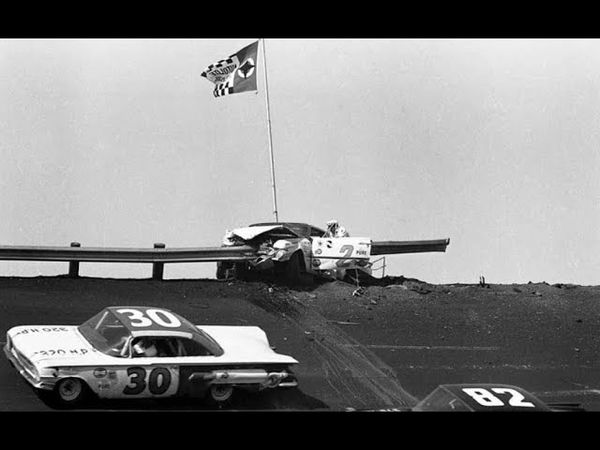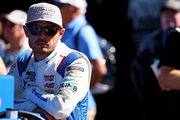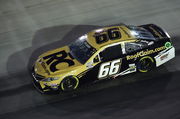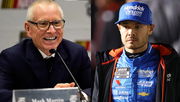
via Imago
Unlicensed image

via Imago
Unlicensed image
Long before safety became NASCAR’s appellation, some 60 years before the dawn of the Next-Gen cars, drivers bore the consequences and went to work with basic safety features such as seatbelts, roll bars, helmets, etc. Even the tracks and venues were pretty inadequate to house such events. Despite all these vulnerabilities, in 1960, the organization decided to kick off World 600 – an exclusive race intended to separate the best man and machine from the rest.
The 400-lap endurance test was a massive hit in the community with fans dropping down to the track in thousands. With such a huge fan turnaround, the organization decided to feature it again in 1961, the one race that would later traumatize NASCAR fans beyond the imaginable. While the race went down in history as David Pearson’s first win in the faction, it earned its notoriety because of Red Kagle’s infamous crash that cost the driver his left leg.
Despite being dispirited by a bad stroke of luck, the 1961 World 600 was Kagle’s last race until his monumental comeback 16 years later, making a loud statement that will forever reverberate in NASCAR halls.
ADVERTISEMENT
Article continues below this ad
Reds Kagle was inches away from losing his life
A couple of months ago in Daytona, the community witnessed a horrific crash when Stewart-Haas Racing‘s driver Ryan Preece was sent airborne, traveling meters into the air, rag-dolled – doing multiple flips until the horror stopped with the car coming to a halt. Miraculously, the driver survived the accident unscathed with minor scratches owing to the sport’s safety evolutions.
However, this wasn’t always the case. Long before the state-of-the-art safety harnesses and new generation cars were introduced, old-school drivers went out racing, pushing their limits and hanging by a thread, resting all hope on luck. However, even the mighty ones couldn’t escape an unlucky day or two, that would cost them much more than what they could afford.
A similar day unfolded in 1961, when former NASCAR driver Reds Kagle had a run-in with misfortune. Kagle was piloting his #2 1961 Ford around the Charlotte Motor Speedway. After completing nearly 220 laps, Kagle’s car rose to the top of the banked oval in turn 3 and slammed into the guardrail at full speed.
Upon impact, the poorly designed guard rail tore apart the car, going in through the engine itself, through the firewall into the driver’s cabin to impale the Ford. Twenty feet of steel girder slammed in, puncturing the #2 car’s front fascia, ultimately traveling through the engine compartment, and firewall, seriously wounding the driver and crushing his left leg below the knee.
The horrific wreck cost a totaled automobile and a leg – a price too steep for a racer. Judging by the intensity of the crash, it could’ve even cost the driver his life. This marked Kagle’s last race before he made a comeback, competing in two different NASCAR Nationwide Series events, incredibly winning the second one of the two on his home turf, even with his accidental disability.
WATCH THIS STORY: Tony Stewart’s unyielding spirit: A NASCAR legend’s rebuttal
Trending
The epic comeback – Reds Kagle’s 1977 Nationwide Series race at Maryland
Shortly after the vicious wreck, Kagle was rushed to the Cabarrus Memorial Hospital in Concord, where the doctors were forced to amputate the left leg just above the knee. While the driver also suffered numerous cuts, bruises, and a fractured right ankle, the loss of a leg is what cost him his racing career.
Just to give you an idea of truly how intense the crash was, it nearly took 25 laps of caution to get the race on schedule, prompting even Bill France, President of NASCAR to get down on the ground, work among the on-site personnel, installing cables so that the race could go on. Later during that day, David Pearson won his first Grand National race on the biggest stage, edging out Fireball Roberts.
ADVERTISEMENT
Article continues below this ad

In his six years in the series, he competed in 25 races and finished with nine top-10s with his best performance of P4 coming at Richmond, a couple of years prior. While the world of NASCAR saw the rise of Pearson that day, for Kagle his comeback wouldn’t come to fruition until 1977 when the driver who was in his mid-40s emphatically won on his home track in NASCAR Late Model Sportsman aka Nationwide Series at Beltsville Speedway.
ADVERTISEMENT
Article continues below this ad
Kagle’s tale is one that still enthralls the community with his grand comeback, shining brighter than the sun even to this day.
ADVERTISEMENT
ADVERTISEMENT
ADVERTISEMENT
ADVERTISEMENT





